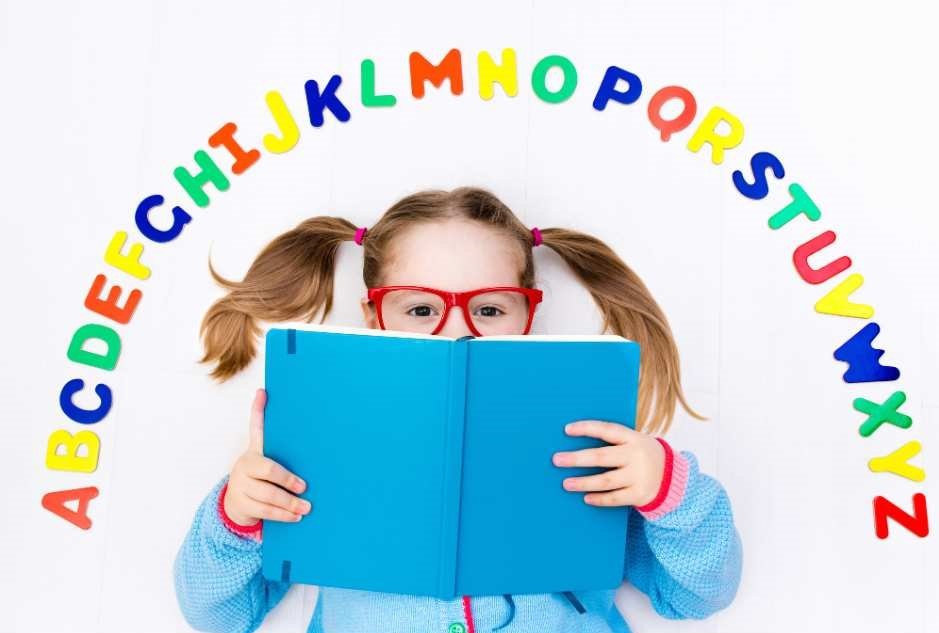F Words Speech Therapy for Children at Home
Have you ever heard your child say "fish," and it sounds more like "ish"? You're not alone! The F-sound, a seemingly simple phoneme, can pose significant challenges for children with speech delays.
For some children, mastering this tricky sound is a battle cry, a hurdle to overcome on their journey to clear communication.
In this article, we explore the reasons behind this common hurdle and delve into effective strategies used in speech-language therapy to help children master this crucial sound. Whether you're a parent, therapist, or simply curious about speech development, join us as we unlock the secrets of the F-word!
Understanding F Sounds: The Basics
F Sound Production: Techniques and Tips
Common F Sound Errors and Solutions
Target Words and Lists for F Sound Therapy
High-Frequency Functional Words in F Sound Therapy
Tips for Parents and Speech-Language Pathologists
Understanding F Sounds: The Basics
The F sound is a fricative sound produced by pushing air through a small gap between the upper teeth and lower lip, causing friction. Younger children typically master the F sound around the age of 4. A variety of factors can influence a child’s mastery of the F sound, including:
Perception and production of consonants
Ability to perceive and produce vowels
Mastery of consonant clusters
Language development
The Fricative Sound
In speech therapy, a fricative sound is a type of consonant sound produced by narrowing the vocal tract, resulting in turbulence in the airflow. These sounds significantly affect language development, contributing to speech clarity and overall communication skills.
The F sound, mainly, is a voiceless fricative produced by the friction between the bottom lip and top teeth. Fricative sounds, such as the F sound, form the foundation for mastering other sounds, particularly at the beginning of words.
Age of Mastery for F Sound
Children who can speak English start learning to form the F sound around 2 or 3 years of age. This sound is usually one of the easier for young children to use. By age 4, about 90% of children have mastered the F sound.
If a child hasn’t mastered the F sound by their age, some strategies can help. Parents can:
Work on one sound appropriate for their child’s age
Exaggerate the F sound
Show the correct mouth and teeth positioning
Encourage the child to copy their pronunciation
Consistent practice and, if needed, professional help from a speech therapist or clinician can further support the child’s F sound development.
F Sound Production: Techniques and Tips
Accurate production of the F sound is critical for articulate speech, and specific techniques can assist. Maintaining the proper lip position, distinguishing between voiced and unvoiced F sounds, and practicing with specific target words can all support correct F sound production.
Correct Lip Position
The correct lip position is crucial for producing the F sound accurately. To make the F sound, lightly touch your upper teeth to your lower lip and then breathe out. Some common mistakes with lip position for the F sound include not having the lower part of the upper teeth touching the lower lip or not having the upper teeth lightly touching the lower lip.
Practicing the correct lip position can aid children in enhancing their pronunciation of the F sound and reducing speech errors. Here are some steps to follow:
Encourage your child to observe your mouth and teeth positioning while you produce the F sound.
Ask them to imitate you and practice the F sound with the correct lip position.
Consistent practice can help them develop the muscle memory needed for correct F sound production.
Voiced and Unvoiced F Sounds
The difference between voiced and unvoiced F sounds lies in the vibration of the vocal cords. Voiced F sounds produce a vibration in the vocal cords, whereas unvoiced F sounds don’t. Voiced F is essentially the V sound. Voiced F sounds include the words “vine” and “cave,” while unvoiced F sounds can be heard in words like “fan” and “fist.”
Teaching the difference between voiced and unvoiced F sounds can be achieved by:
Explain the role of vocal cord vibration and having your child feel for the vibration near their Adam’s apple.
Provide examples and practice exercises, such as feeling for vibrations when producing different sounds, to help your child distinguish between voiced and unvoiced F sounds.
Improve their overall pronunciation during speech therapy.
Common F Sound Errors and Solutions
Children may encounter various errors when producing the F sound, such as stopping and substitution, which can impact their speech intelligibility. Additionally, multilingualism can affect F sound production, making addressing these challenges during speech therapy crucial.
We will examine these common F sound errors and potential solutions.
Stopping and Substitution
Stopping occurs when a child produces a stop sound (like /b/) instead of a fricative sound (like /f/). Substitution happens when the F sound replaces another sound, such as saying “pun” instead of “fun.” Both stopping and substitution can affect a child’s speech intelligibility and must be addressed in speech therapy.
Correcting stopping and substitution errors involves:
Demonstrating the correct F sound for your child
Encouraging them to replicate your pronunciation
Exaggerating the F sound
Showing your child the right mouth and teeth positioning
Providing plenty of opportunities for them to practice the sound in various words and phrases
Multilingualism and F Sound Errors
Multilingualism can impact F sound errors, particularly for speakers of languages like Spanish, which have a different sound system. Children who speak multiple languages may struggle with the correct production of the F sound, requiring targeted strategies to address these challenges in speech therapy.
To help multilingual children with F sound errors, follow these steps:
Exaggerate the F sound and demonstrate the correct mouth and teeth positioning.
Encourage them to copy your exaggerated pronunciation and practice the sound in syllables, sentences, and conversation.
Provide ample practice opportunities and visual demonstrations to help multilingual children overcome F sound errors related to their language background.
Target Words and Lists for F Sound Therapy
Target words and lists have a significant role in F sound therapy, offering a structured method for practicing the F sound in various word positions, such as beginning, middle, and end. These target words can assist children in enhancing their target sound pronunciation and furthering their speech development.
Initial F Words
When looking for initial F words, such as “fan,” “feet,” “fun,” “fall,” “fame,” and “fawn,” you might come across an “f word list” that can help you expand your vocabulary and find more words starting with this letter.
These words are an excellent starting point for practicing the F sound in speech therapy. These words help children focus on the correct production of the F sound at the beginning of words, leading to improved pronunciation and enhanced speech development.
Parents and speech therapists can use initial F words in various exercises and activities to help children master the correct production of the F sound in this initial position—for example, practice saying initial F words in isolation, in sentences, or a playful game. Consistent training with initial F words will help children master the correct production of the F sound in this word position.
Medial F Words
Medial F words, such as:
“muffin”
“dolphin”
“buffalo”
“puffin”
Medial F words help children practice the F sound within words. This practice can be instrumental in improving pronunciation and speech development, particularly for children who struggle with the medial F sound.
Incorporate medial F words into various speech therapy exercises and activities. Encourage your child to practice saying medial F words in isolation, within sentences, or as part of a game. Consistent practice with medial F words will help children improve their pronunciation of the F sound in this word position.
Final F Words
Final F words, such as:
“huff”
“puff”
“calf”
“off”
Final F words provide valuable practice for the F sound at the end of words. Focusing on final F words in speech therapy can help children improve their pronunciation and speech development, particularly if they struggle with the F sound in this position.
Incorporate final F words into various speech therapy exercises and activities. Encourage your child to practice saying final F words in isolation, within sentences, or in a playful game. Consistent practice with final F words will help children master the correct production of the F sound in this word position.
High-Frequency Functional Words in F Sound Therapy
High-frequency functional words are essential in F sound therapy, as they provide a practical and efficient approach to practicing the F sound in everyday language. These words can help children improve their pronunciation and speech development more quickly than low-frequency words.
Benefits of High-Frequency Words
Using high-frequency words in F sound therapy has several advantages. Children can recognize high-frequency words more quickly than low-frequency words, allowing them to focus on pronouncing and articulating the words. High-frequency words can also help improve sentence comprehension, reduce language processing demands, and boost word recognition.
Working on early-developing sounds like the F sound with high-frequency words can help children get off to a great start and boost their self-esteem. Integrating high-frequency words in F sound therapy can lead to greater gains and improved accuracy of the treated sound, making it an essential component of effective speech therapy.
Examples of High-Frequency F Words
Examples of high-frequency F words for use in speech therapy include:
“farmer”
“father”
“first”
“floor”
“flower”
“found”
These words can help children practice the F sound in various contexts, leading to improved pronunciation and speech development through mastering speech sounds.
Incorporate high-frequency F words into various speech therapy exercises and activities. Encourage your child to practice saying these words in isolation, within sentences, or as part of a game.
Consistent practice with high-frequency F words will help children master the correct production of the F sound in everyday language.
Tips for Parents and Speech-Language Pathologists
Parents and speech-language pathologists play vital roles in supporting children’s F-sound development. By working together, they can provide a comprehensive and consistent approach to therapy, ensuring that children receive the support they need to master the F sound.
Encouraging Home Practice
Parents can play a significant role in their child’s F-sound development by:
Encouraging consistent home practice
Repeating the F sound with the child
Setting aside dedicated time each day
Making F sound practice a part of the daily routine
Positive reinforcement is crucial in motivating children to practice their F sound at home. Praise their efforts, celebrate their achievements, and provide constructive feedback to help them improve their pronunciation. Remember, consistency and patience are key when working on speech therapy at home.
Speech Therapy At Home
Check out our blog on speech therapy at home for more information!
Collaborating with Speech-Language Pathologists
Parents and speech-language pathologists can collaborate effectively by:
Exchanging information
Setting goals
Staying in touch
Practicing at home
Attending therapy sessions
Open communication and collaboration between parents and speech-language pathologists can help support a child’s F-sound development and address any issues or difficulties that may arise during therapy.
Speech-language pathologists can also involve parents in speech therapy by offering clear instructions, adapting session activities for home practice, and providing communication logs or handouts to keep parents informed. Acknowledging the importance of parental involvement in speech therapy and emphasizing their role in their child’s success can lead to more effective collaboration and better outcomes for the child.
Frequently Asked Questions About F Words and Sound
1. How do you teach the F word?
Teaching the /f/ sound is relatively simple: rest your front teeth on your bottom lip and blow without vibrating your vocal cords. It can be helpful to model this on your mouth first and then touch their bottom lip lightly to show them how it should feel.
2. How do you help a toddler with the F sound?
Help your toddler with the 'F' sound by demonstrating how to make it - e.g., "bite your lip and blow" or "make a rabbit face and blow" - and giving them clear instructions such as "put their top teeth on their bottom lip and push air out – ffffff." Exaggerate the sound and movement of your mouth when you pronounce the sound and encourage your child to imitate you.
3. How do you practice the F sound?
To practice the F sound, have your child lightly rest their front teeth on their bottom lip and blow air out. You can demonstrate the correct technique by pointing to your mouth and showing them how to push air out — “fffffff.”
4. Are there any games or activities to make learning the F sound more engaging?
Yes, there are several fun and interactive activities to make learning the F sound enjoyable. Consider playing games like "Feather Fetch," where your child says the F sound each time they retrieve a feather with their mouth. Additionally, using flashcards with F words and incorporating them into storytelling or rhyming games can add an element of playfulness to the learning process.
How Connected Speech Pathology Can Help You
Connected Speech Pathology extends its expertise to assist parents and caregivers in implementing effective "F words" speech therapy at home for children. Articulation challenges, primarily related to sounds like 'F,' can impact a child's speech development and overall communication skills.
Our speech pathologists provide accessible resources and guidance for parents to support their children in practicing and mastering the 'F' sound in the comfort of their home environment. Connected Speech Pathology offers creative and engaging activities that parents can incorporate into daily routines to make speech therapy enjoyable for children while addressing specific articulation goals.
Through virtual sessions, online resources, and personalized recommendations, Connected Speech Pathology empowers parents to play an active role in their child's speech development. The guidance includes techniques for proper tongue placement, vocal exercises, and interactive games reinforcing the correct production of the 'F' sound.
By integrating speech therapy into the home setting, parents can contribute to their child's progress and foster a positive attitude towards speech practice. Connected Speech Pathology's commitment to making speech therapy accessible ensures that children receive consistent and practical support, laying the foundation for improved articulation and enhanced communication skills.
Summary
F sound speech therapy is essential for developing clear and effective speech in children. By understanding the basics of F sounds, learning techniques for correct production, identifying and addressing common errors, and utilizing target words, materials, and activities, parents and speech-language pathologists can help children master the F sound.
Collaborating effectively and integrating high-frequency functional words into therapy can enhance the speech therapy experience. With dedication, patience, and the right tools, every child can succeed in their F sound development journey.
About the Author
Allison Geller is a speech-language pathologist (SLP) and the owner of Connected Speech Pathology. She obtained her Bachelor’s and Master’s degrees from the University of Florida in Speech-Language Pathology. Allison has practiced speech therapy in a number of settings including telepractice, acute care, outpatient rehabilitation, and private practice. She has worked extensively with individuals across the lifespan including toddlers, preschoolers, school-aged children, and adults. She specializes in the evaluation, diagnosis, and treatment of a variety of communication disorders including receptive/expressive language disorders, articulation disorders, voice disorders, fluency disorders, brain injury, and swallowing disorders.
Allison served as the clinical coordinator of research in aphasia in the Neurological Institute at Columbia University Medical Center in New York. She is on the Board of Directors for the Corporate Speech Pathology Network (CORSPAN), a Lee Silverman Voice Treatment (LSVT) certified clinician, and a proud Family Empowerment Scholarship/Step-Up For Students provider. Allison is passionate about delivering high quality-effective treatment remotely because it’s convenient and easy to access. What sets us apart from other online speech therapy options is—Allison takes great care to hire the very best SLPs from all over the country.











